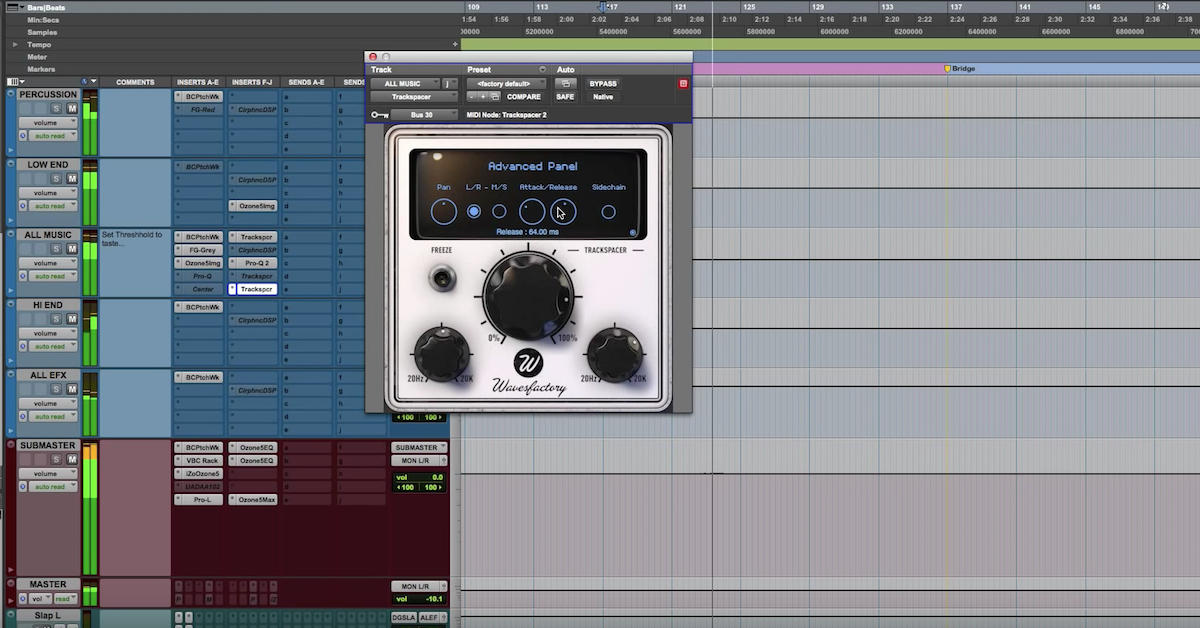5 Tips for a Better Sense of Space in Your Mixes
Article Content
1. Make Smart and Deliberate EQ Choices
Oftentimes what causes a mix to sound “muddy” or “cloudy” is different elements of an arrangement masking one another.
One of the first things I do after setting initial balances and organizing a session, is go through with an EQ like the FabFilter Pro-Q 2 and apply subtractive EQ to elements that have excessive amounts of low end and low-midrange.
An added benefit of this approach is your compressors will behave better when they’re not being driven with unnecessary low end information — but first and foremost — the space between the different instruments will become more defined once properly cleaned up with EQ.
2. Fix Drum Balances Early (Where Applicable)
It’s not uncommon for recordings of acoustic drums to have at least 15 tracks worth of material: multiple kick and snare drum mics, direct toms, overheads, room captures and so on — try to find a balance that feels good early on, because the space in which you place the drums will perhaps have more influence than any other individual part of an arrangement on the overall perceived space of a mix.
I’ll usually tend to the drums very early on in the mixing process, setting balances for each individual mic, applying subtractive equalization, and adding compression to the kick, snare, and room mics when necessary.
I hardly ever apply reverb plugins/processing to my acoustic drums if they were recorded properly in a decent environment.
Automating the balance between direct, room and overhead signals (see point 4) can also make a huge difference in the overall energy of your mix.
3. Utilize Different Types of Reverb and Delay
There are so many great reverbs and delays out there, it can be easy to overuse them. Applying too much of these can be detrimental to the space of your mix because they can quickly build up and ruin any sense of definition.
Learn the difference between spring, plate, chamber etc., and apply them conservatively.
Don’t be afraid to use onboard filters that come with reverb plugins to get rid of some extreme low or high end. If your plugin of choice doesn’t offer this option, adding an EQ to shape the tone of your reverb is a great solution.
The same goes for delay: make sure your delays are MIDI-synced when applicable, filter them, and be aware of the characteristics of the different types of delays.
Spending a day with SoundToys EchoBoy and listening to the different styles is a great way to learn.
4. Automate, A Lot
Before the days of virtually unlimited DSP and thousands of incredible plugins, engineers relied primarily on balance to define the space of an arrangement.
After I apply EQ, compression, and other processing, I’ll play through the song several times, recording volume automation for different parts each time.
This is fun because I literally get to “play” the song like an instrument, and help draw attention to various parts that need to stand out at key moments.
5. Compress Carefully
Whereas applying compression to drum room mics can make them seem even more roomy and big, applying compression to individual parts such as vocals, or even the entire mix, can bring things forward and closer to the listener.
Know your different compressors, and experiment with attack and release times until you feel more comfortable with compression in general.
It’s not hard to ruin an entire mix by applying too much of the wrong kind of compression or limiting to the master bus.





